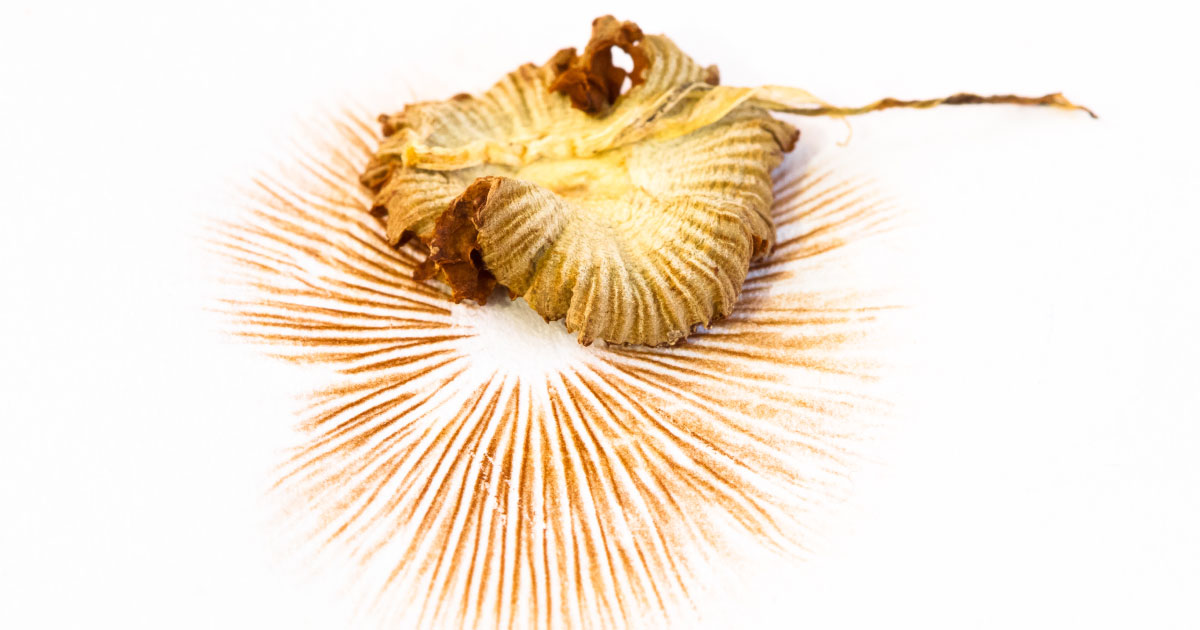
Fungi are more closely related to animals than to plants. Mushrooms are part of a larger group of organisms known as fungi. (We haven’t tried this yet – but I’m super keen to do this next time!)ĭepending on how hot and humid your house was overnight, you might even be able to eat the rest of the mushroom! Mmmm, grilled mushroom on toast anyone? Place a drop of water on the spores and cover with a cover slip. Or if you’d rather study the spores under a microscope, you can scrape off some of the spores with a needle, and place the spores on a microscope slide. If you want to preserve your spore print, you can spray it with hairspray and let dry. I love the way you can clearly see the shape of the gills. Step 5: The next day, gently lift the box and the mushroom, and you should see a beautiful spore print on the paper underneath!Įach individual spore is incredibly teeny tiny, but on mass they look really impressive. Cover with an upside-down box, and set it aside somewhere where it won’t be disturbed. Step 4: Add a few drops of water to the top of the mushroom cap to encourage the spores to drop. (We used regular printer paper, but I think slightly thicker paper would have been better. Step 3: Place the top section of the mushroom gill-side down on a piece of paper.

Bumble Bee thought it was delicious! (Somehow food always tastes better when you’re playing with it, don’t you think?) If it’s a store-bought mushroom, see if your kids will snack on the off-cuts. This should also ensure that the stem is flush with the underside. Step 2: Cut off the lower portion of the mushroom, exposing the gills. Note: if you’re going to pick a wild mushroom, don’t eat it unless you know its not poisonous! And please wash your hands carefully afterwards. Step 1: Buy a mushroom that has its gills mostly protected (or if its gills are exposed, try to choose one that’s as fresh as possible). We decided to use a large field mushroom (also called portobella or open cap mushroom) since we’d bought one from the store earlier that day. You can actually make a spore print with any mushroom, and apparently different mushrooms have different coloured spores and create different patterns, which is so awesome. Older kids might also like to try scraping off some spores and studying them under a microscope afterwards. My inspiration for this post was the very beautiful Dancey Pants Disco! Further reading at Milkwood Permaculture Blog.Try this as a nature science activity for preschoolers or kindergarteners. My 4.5 year old daughter Bumble Bee thought this was the coolest thing ever! Some prints smudged, but for me, it was worth it for the hands-on learning experience. I allowed my children to trim the mushrooms but they damaged them a little. The mushrooms are delicate, if you want perfect prints you may want to try this alone. I'd love to try this with different types of mushrooms!ĭecide from the start how involved you want your children to be in the process. Some fungi have white spores so look lovely on black card. We used black and white card, however, our mushrooms had brown spores and therefore the white card worked best.
SPORE PRINT HOW TO
Only use edible mushrooms, we don't pick mushrooms in the wild as we don't know how to identify them. You can use a fixative spray to keep the spores in place, similar to what you might use on charcoal pictures, we use the Micador Spray Fixative (for adult use only). Notes: Remember the print is made by the spores so it will smudge very easily. Step Six: Admire your amazing mushroom spore prints! Share your results with friends! Step Five: Remove the bowls and gently lift up the mushroom to reveal the print! My boys loved this, it's like opening a present, you don't know what you are going to get! Step Four: Leave the mushrooms for 12-24 hours. Most importantly the bowls allow the spores to drop from the gills to form patterns without any disturbances. This created a little humidity which I believe is conducive for the mushrooms to release spores. Step Three: Place bowls over the mushroom caps. We used matte photograph paper, matte card and watercolor paper. Step Two: Place the caps of the mushrooms face down on card or thick paper (gills facing the paper). Step One: Trim mushrooms and remove the stems. Here we used flat and portabello mushrooms.

I've seen this done online but I was still surprised on how clear and detailed the prints turned out! Also, I wasn't sure if fresh 'supermarket' mushrooms would work, but they do, perfectly! I've heard that button mushrooms don't drop spores like this.

An older child can closely examine the prints to identify the type of mushroom and put the spores under the microscope. For a young child, it can be an activity to make pretty prints. Have you made mushroom spore prints before? It is incredibly easy to do and suitable for children of all ages.


 0 kommentar(er)
0 kommentar(er)
